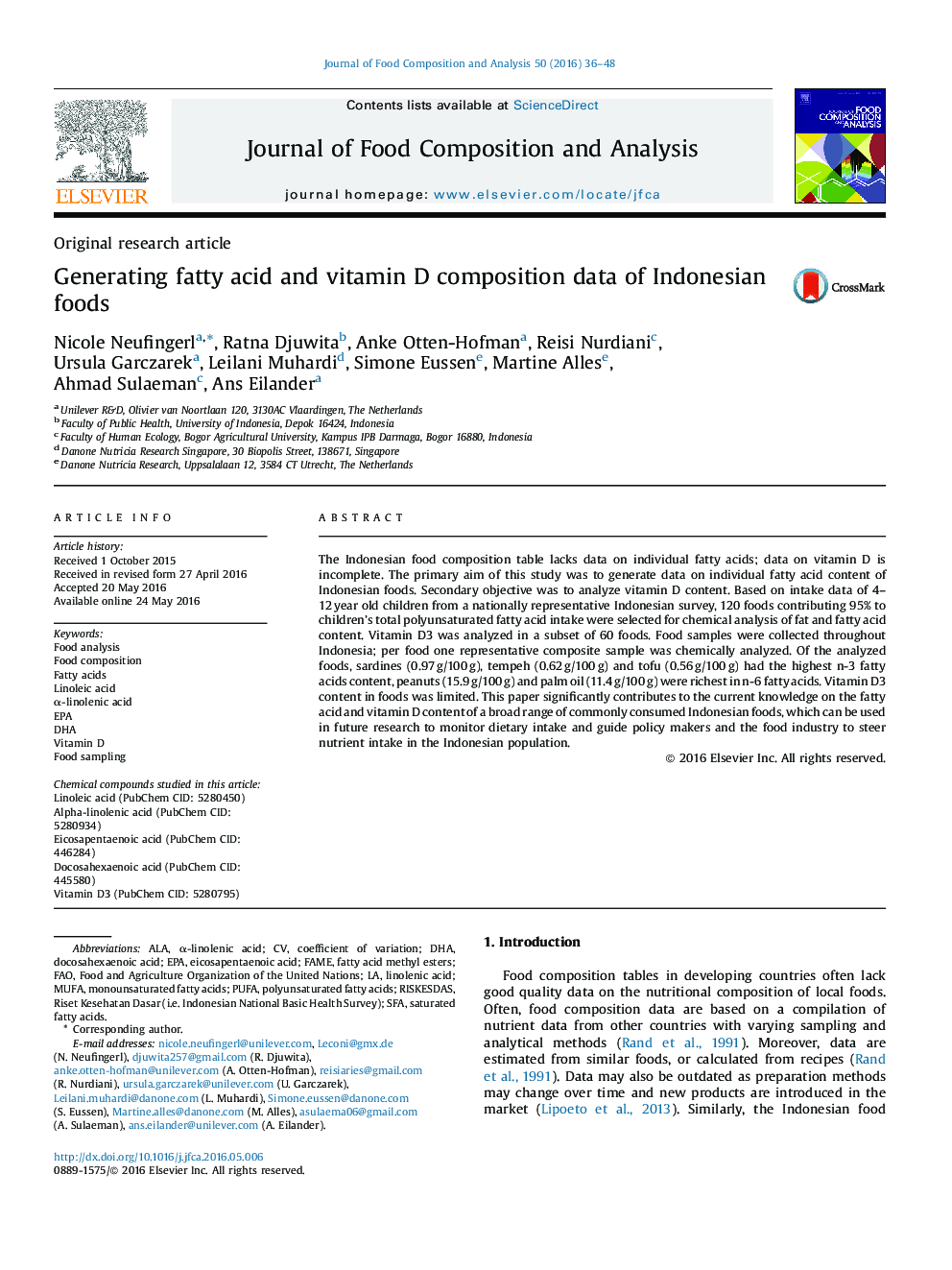| Article ID | Journal | Published Year | Pages | File Type |
|---|---|---|---|---|
| 1218040 | Journal of Food Composition and Analysis | 2016 | 13 Pages |
•Comprehensive fatty acid profiles for a broad range of Indonesian foods are presented.•Data are based on chemical analysis of national representative samples.•Data on vitamin D3 are provided for a subset of 60 foods.•For additional foods, fatty acids are imputed from the US nutrient database.•The newly generated data can supplement the Indonesian food composition table.
The Indonesian food composition table lacks data on individual fatty acids; data on vitamin D is incomplete. The primary aim of this study was to generate data on individual fatty acid content of Indonesian foods. Secondary objective was to analyze vitamin D content. Based on intake data of 4–12 year old children from a nationally representative Indonesian survey, 120 foods contributing 95% to children’s total polyunsaturated fatty acid intake were selected for chemical analysis of fat and fatty acid content. Vitamin D3 was analyzed in a subset of 60 foods. Food samples were collected throughout Indonesia; per food one representative composite sample was chemically analyzed. Of the analyzed foods, sardines (0.97 g/100 g), tempeh (0.62 g/100 g) and tofu (0.56 g/100 g) had the highest n-3 fatty acids content, peanuts (15.9 g/100 g) and palm oil (11.4 g/100 g) were richest in n-6 fatty acids. Vitamin D3 content in foods was limited. This paper significantly contributes to the current knowledge on the fatty acid and vitamin D content of a broad range of commonly consumed Indonesian foods, which can be used in future research to monitor dietary intake and guide policy makers and the food industry to steer nutrient intake in the Indonesian population.
